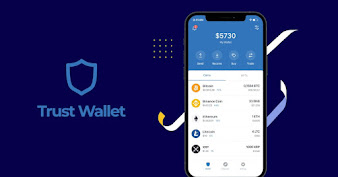How to Retrieve Your Trust Wallet Private Key
.jpg)
Trust Wallet is a decentralized, non-custodial cryptocurrency wallet, meaning it doesn't store your private keys on its servers. Instead, you control your private keys through a 12-word recovery phrase generated during wallet creation. This phrase allows you to restore access to your wallet and its associated private keys. If you need to retrieve your private key for a specific cryptocurrency within Trust Wallet, follow these steps: Access Your Recovery Phrase : Open the Trust Wallet app. Navigate to Settings > Wallets . Tap the three-dot menu next to the wallet in question. Select Show Recovery Phrase . Securely store this 12-word phrase; it's crucial for wallet recovery. Use a BIP39 Mnemonic Code Converter : Visit a reputable BIP39 Mnemonic Code Converter tool. Enter your 12-word recovery phrase. Select the cryptocurrency (e.g., Bitcoin, Ethereum) for which you need th...


